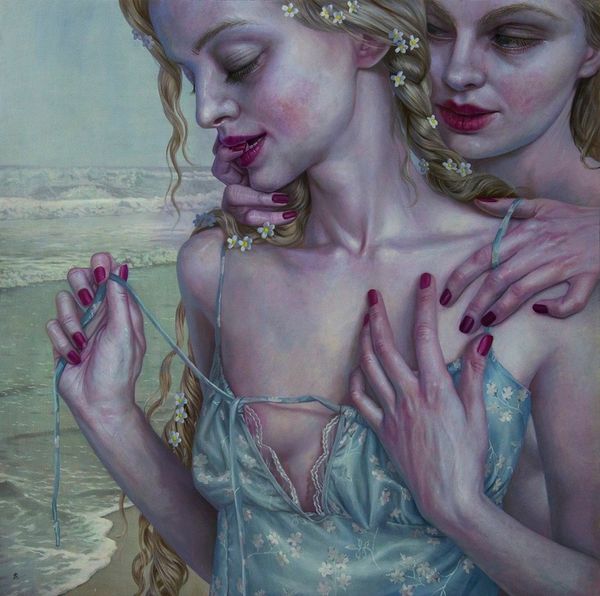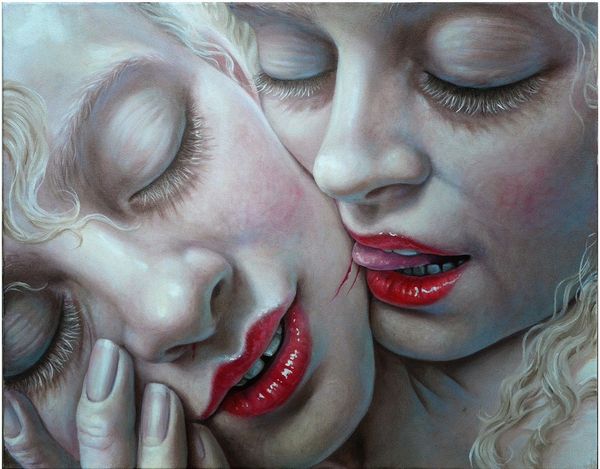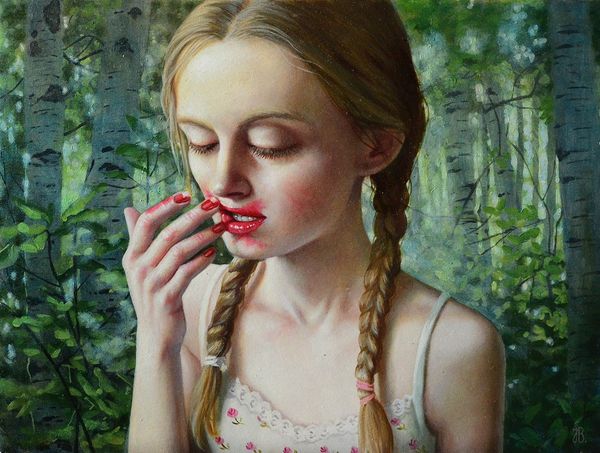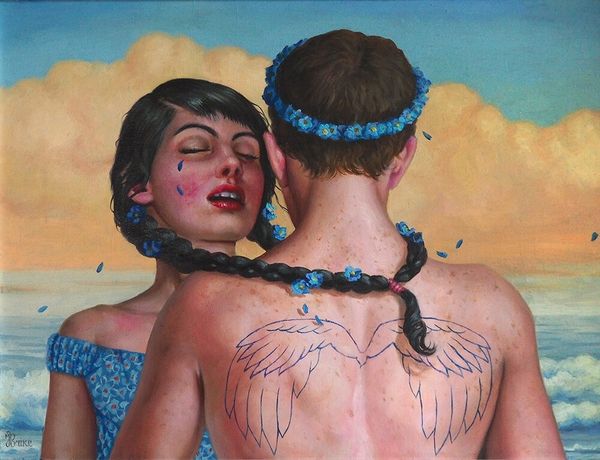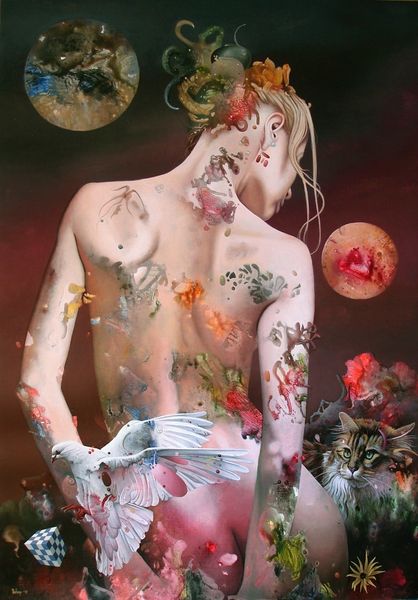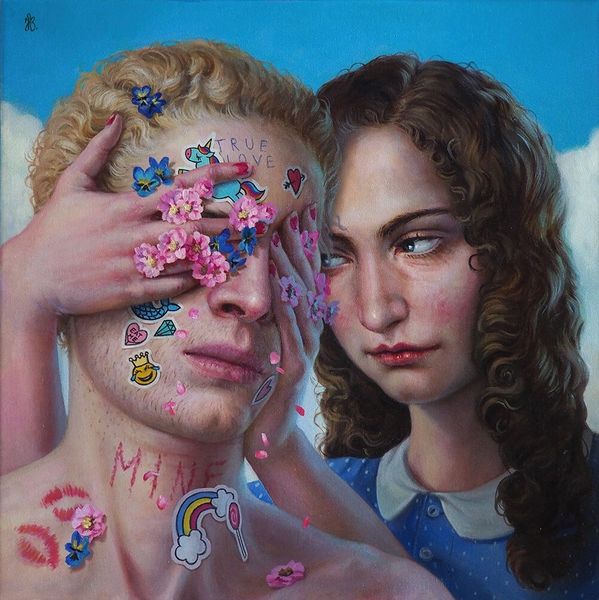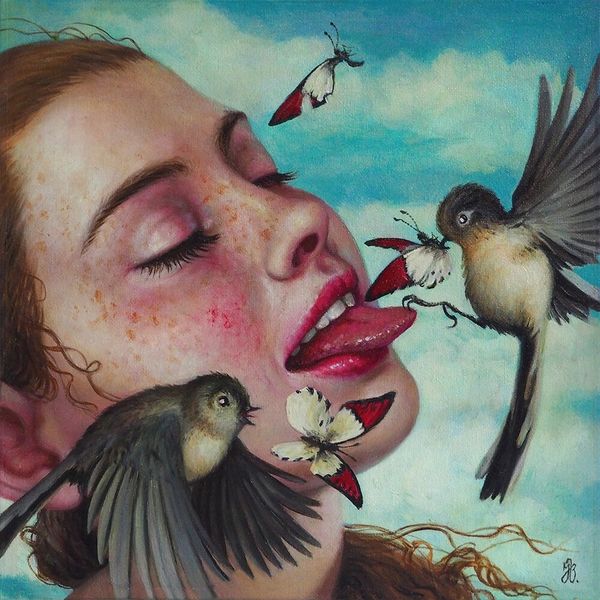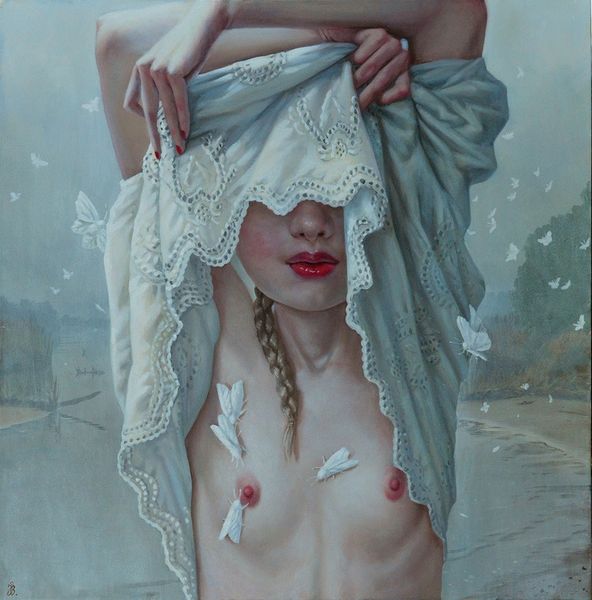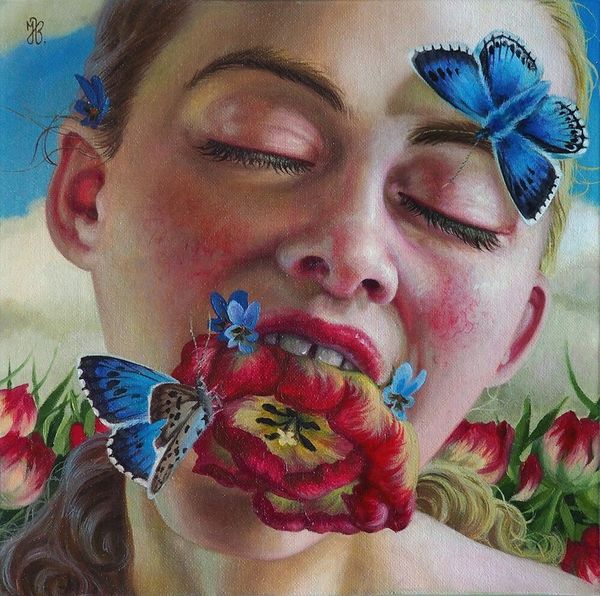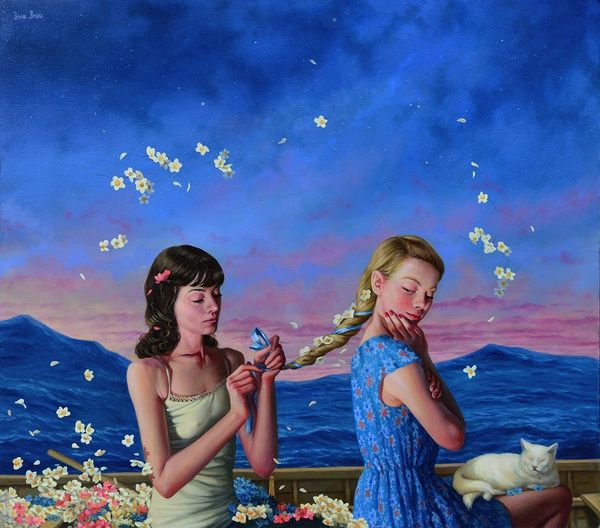
painting, acrylic-paint
#
portrait
#
figurative
#
painting
#
acrylic-paint
#
neo expressionist
#
acrylic on canvas
#
neo-expressionism
#
group-portraits
Copyright: Modern Artists: Artvee
Curator: Jana Brike’s “kissing lessons behind the school shed,” painted in 2015 using acrylic on canvas, offers a compelling view of… well, what do you think when you see it? Editor: My first impression is one of transgression mixed with tenderness. It’s sensual and defiant. The sweetness of the floral crown juxtaposed against the almost aggressive advance creates a tension I find really compelling. Curator: Absolutely. This tension, in my view, is reflective of shifting cultural attitudes towards adolescent sexuality. The “school shed” setting implies a surreptitiousness, a hidden act, pointing to societal restrictions and moral codes around young people and their expressions of desire. Editor: Right. And let’s consider how these codes are often intensely gendered. The positioning of the figures, with one actively reaching and the other being touched, might be seen through the lens of power dynamics – perhaps mirroring or subverting stereotypical roles assigned to young women in particular. The butterflies almost act as witnesses. Curator: Witnesses, or perhaps symbols of transformation. The butterfly motif in art has often represented the soul or the journey of metamorphosis. In the context of a painting about first kisses, it resonates with the theme of personal discovery. As far as the medium is concerned, Jana Brike has long been recognized for these hyper realistic acrylic-painted pieces. The setting also evokes the Pre-Raphaelite era where art returned to nature. What is new in Jana Brike is this idea that first experiences of discovery happen in clandestine. Editor: I agree completely. The slightly naive neo-expressionist painting style lends the image an immediacy, a raw emotional vulnerability. You're really getting a sense of first time queer encounters being fraught with anxiety due to both self and societal acceptance. The intensity in their closed eyes, one protruding tongue against receptive lips, also points to the complex negotiation of agency. Who is leading? Who is consenting? Curator: Indeed. It prompts important conversations about consent, particularly in the context of queer female relationships where representations in mainstream media have historically been limited or stereotyped. Jana Brike allows queer children to come into themselves. Editor: Precisely. “Kissing lessons behind the school shed” becomes more than just a depiction of youthful intimacy. It's a powerful reflection on cultural anxieties, gender roles, and the ongoing quest for authentic representation in art. Curator: Thanks. This painting allows me to revisit queer art and how the intersectional narrative focusing on identity, gender, race, and politics keeps expanding over time. Editor: Yes. It's exciting to consider what these emerging visions of art will become over time as the world grapples with evolving definitions of beauty and expression.
Comments
No comments
Be the first to comment and join the conversation on the ultimate creative platform.
